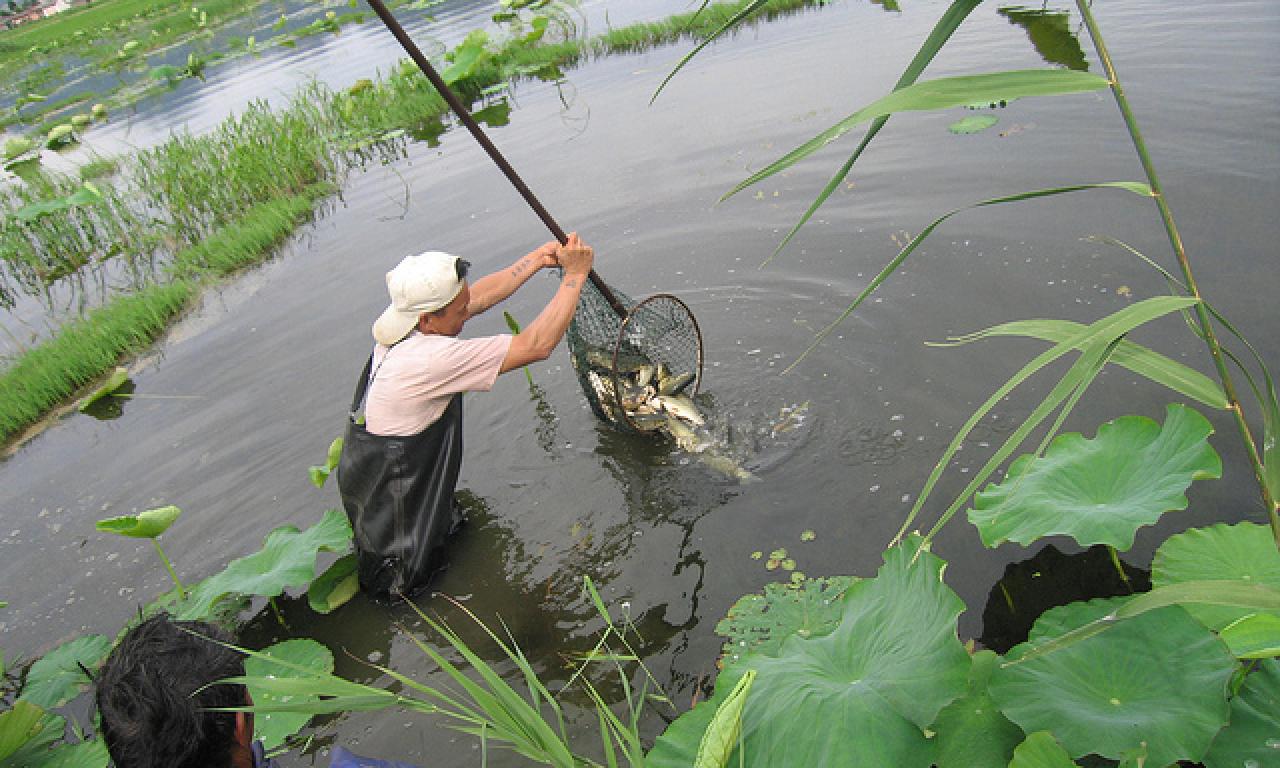
On World Oceans Day, we celebrate and call for conservation of marine biodiversity. The 1,000 or so islands that make up the Solomons are on the edge of the Coral Triangle, home to one of the highest diversity of marine life anywhere.
Recommended publications
- Nearshore fish aggregating devices (FADs) for food security in Solomon Islands
- Engaging women and men in community-based resource management processes in Solomon Islands
On World Oceans Day, we celebrate and call for conservation of marine biodiversity. The 1,000 or so islands that make up the Solomons are on the edge of the Coral Triangle, home to one of the highest diversity of marine life anywhere. The ocean is a crucial source of food and income for people living in Solomon Islands where poverty and food insecurity are critical problems. In light of this, we ask: how can we conserve marine resources and protect the well-being and livelihoods of the poor and vulnerable who depend on them?
In Solomon Islands, the coral reefs and associated habitats sustain fisheries that are an essential part of the local diet and economy. Rich mangrove forests provide important coastal protection against erosion and are vital nursery grounds for local fisheries. However, these fragile marine ecosystems are under threat. Coral is a key local building material and is also burnt to create lime, which is chewed together with betel nut and is an important local commodity. Mangroves provide wood for fire and construction.
For Solomon Islanders, 80% of whom live in coastal communities, fish is a staple, with islanders consuming as much as two to four times the global average. The Solomons rank as one of the lowest of all Pacific nations on the Human Development Index. And, with over 20% of Solomon Islanders living in poverty according to World Bank estimates, wild caught fish provides an accessible and nutritious food containing high levels of micronutrients that are particularly important for pregnant women, nursing mothers and young children. With stunting affecting a third of all children under the age of 5 chronic malnutrition which affects 33% of the populationremains a serious public health concern.
A delicate balancing act must be maintained and viewing the mangrove forests, reefs and fisheries together as an ecosystem allows us to better understand the connections and protect against degradation of these valuable natural resources.
WorldFish is an international, nonprofit research organization that harnesses the potential of fisheries and aquaculture to reduce poverty and hunger.
One of the areas of research that WorldFish and its partners focus on is a ‘community-based resource management’ approach to fisheries management. The methodology is recognized by the Government of Solomon Islands as a principle strategy for marine conservation and small-scale fisheries management. In implementation, the approach is often supported by a partner, either governmental or, more commonly a non-governmental organization.
Knowledge sharing and learning is a core part of the WorldFish led CGIAR Research Program on Aquatic Agricultural Systems (AAS). The program takes a ‘participatory action research’ approach, working with community members as co-researchers to develop locally appropriate solutions. Community members who are involved in or impacted by management of their own natural resources have responsibility for participating in decision-making processes; defining access rights; limiting harvesting; practicing enforcement and compliance; undertaking monitoring; and periodically reviewing and adjusting fisheries management arrangements.
Capacity building through locally hosted workshops that recognize and build on the knowledge and experience of local people is a key tool.
In 2013, a workshop in Langalanga held as part of AAS, raised awareness and understanding of the importance and value of mangroves. Participants joined field visits to a community-managed mangrove nursery and replanting sites to practice species identification and learn replanting techniques.
In another workshop in Langalanga, participants were taught how to collect cuttings from healthy coral and build the structural foundations for a coral garden. Techniques for maintaining the coral garden and transplanting mature corals to reefs near the lagoon for ‘re-stocking’ were also covered. The workshop was facilitated by AAS and funded by the European Union’s, Ecosystem Approach to Fisheries Management project.
In some cases, during the community-based resource management approach, communities identify the need to provide alternatives for fishers who will have reduced access to coastal fisheries. Nearshore fish aggregating devices (FADs) are one such example. Essentially moored rafts, they are used to aggregate oceanic fish such as tuna. In Solomon Islands, they are located close to shore to be easily accessed by fishers, including those using paddle canoes. Nearshore FADs make tuna easier to catch for fishers and can provide a sustainable alternative to reef-based fisheries.
With the natural resource reliant livelihoods of Solomon Islanders already under threat from factors including climate change and population increase, and with a limited capacity for national government management to reach all of the scattered islands and rural villages, community-based resource management is an essential step to adapting to and mitigating against these factors and a major step towards securing essential marine resources for future generations.
For more on these community based approaches see the WorldFish videos Community based fisheries management in Solomon Islands and Replanting Mangroves and coral in Solomon Islands.
This post first appeared in the World Oceans Day blog.